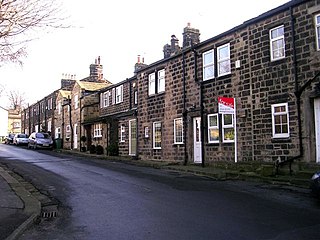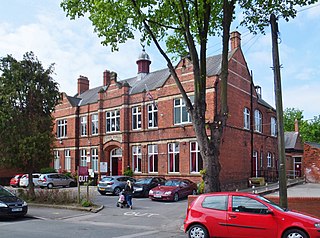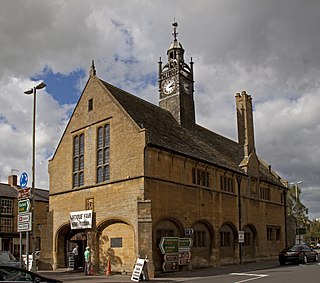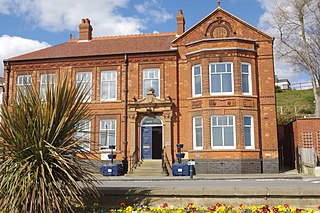
Guiseley is a town in metropolitan borough of the City of Leeds, West Yorkshire, England. Historically part of the West Riding of Yorkshire, it is situated south of Otley and Menston and is now a north-western suburb of Leeds.

Yeadon is a town within the metropolitan borough of the City of Leeds, West Yorkshire, England.

Rawdon is a village and civil parish in the metropolitan borough of the City of Leeds, West Yorkshire, England. It sits on the River Aire and on the A65 south of Yeadon.
Aireborough is a district within the West Yorkshire Urban Area, in the West Riding of Yorkshire, England. It is mostly within the present Leeds metropolitan borough, although some areas now in Bradford metropolitan district may also be considered to form part of Aireborough. It includes the settlements of Guiseley, Hawksworth, Menston, High Royds, Nether Yeadon, Rawdon, Yeadon, West Carlton, East Carlton and Esholt.

Yeadon Town Hall is a municipal building in Yeadon, West Yorkshire, England. It is Grade II listed.

Little London is a village in West Yorkshire, England, that is divided between the Guiseley and Rawdon and the Horsforth wards of the City of Leeds and the Idle and Thackley ward of the City of Bradford. It comprises a conservation area in the westernmost part of Rawdon town which is unique in that the historic area covered by the designation straddles the boundary of districts of Leeds and of neighbouring Bradford. Apperley Lane (A658) forms the municipal boundary.

Elland Town Hall is a municipal building in Southgate, Elland, West Yorkshire, England. The structure, which was primarily used as an events venue, is a Grade II listed building.

Hessle Town Hall is a municipal building in South Lane, Hessle, East Riding of Yorkshire, England. It is the meeting place of Hessle Town Council.

Sandown Town Hall is a municipal building in Grafton Street, Sandown, Isle of Wight, England. The structure, which was the meeting place of Sandown Urban District Council, is a Grade II listed building.

Ardrossan Civic Centre is a municipal building in Glasgow Street, Ardrossan, North Ayrshire, Scotland. The building, which is largely used as a community events venue, is a Category B listed building.

Horbury Town Hall is a former municipal building in Westfield Road, Horbury, West Yorkshire, England. The structure, which is now used as business centre, is a locally listed building.

Lydney Town Hall is a municipal structure in the High Street, Lydney, Gloucestershire, England. The structure, which is used as an events venue, is listed by the local authority as a "building of local architectural or historical interest".

Ballyclare Town Hall is a municipal structure in The Square, Ballyclare, County Antrim, Northern Ireland. The structure, which is primarily used as an events venue, is a Grade B2 listed building.

The Old Town Hall is a municipal building in the Market Square, Leighton Buzzard, Bedfordshire, England. The town hall, which is currently used as a restaurant, is a Grade II listed building.

Wareham Town Hall is a municipal building in East Street, Wareham, Dorset, England. The town hall, which is the meeting place of Wareham Town Council, also hosts the Wareham Town Museum.

Redesdale Hall, also referred to as Moreton-in-Marsh Town Hall, is a municipal building in the High Street, Moreton-in-Marsh, Gloucestershire, England. The building, which is used as an events venue, is a Grade II listed building.

Hunstanton Town Hall is a municipal building on The Green in Hunstanton, Norfolk, England. The structure, which is the meeting place of Hunstanton Town Council, is a grade II listed building.

Fenton Town Hall is a municipal building in Albert Square in Fenton, Staffordshire, England. It is now occupied by local businesses, a café and an art gallery.

The Moot Hall is a municipal building in Market Cross Place in Aldeburgh, Suffolk, England. The building, which is the meeting place of Aldeburgh Town Council, is a Grade I listed building.

Felixstowe Town Hall is a municipal building in Undercliff Road West, Felixstowe, Suffolk, England. The building is the meeting place of Felixstowe Town Council.




















